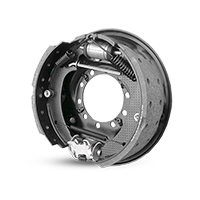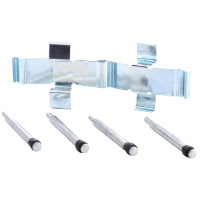abs sensor for my car
ABS sensor for other makes of cars
ABS sensor for cars
-
Best pricesBuycarparts.co.uk guarantees high-quality Wheel speed sensor at very attractive prices.
-
Save on shippingFree shipping within the UK applies to orders over £140.00 and excludes bulky items, tyres, or core parts.
-
Wide choiceWe currently have over 500,000 car parts in our product range.
-
Fast delivery!
Shipping methods
-
Catalog of ABS wheel speed sensor manufacturer:
Replace a Spare part ABS sensor – a defective one or if the limit of use has been already reached. Find out useful information about ABS sensor
- incorrect operation of the sensors;
- mechanical damage of the sensors;
- short circuit or corrosion;
- wiring fault.
- wheel slips during hard start or skids during emergency braking;
- the ABS and ESP indicator readings;
- loss of engine power;
- increase in fuel consumption;
- increase of braking distance on slippery roads.
- incorrect connection of sensors;
- damage to the sensor chip;
- faulty sensor fuses.
- brake system malfunction;
- systematic jump-starts of the car;
- emergency braking at high speed.
Evaluation of the ABS and ESP sensors requires oscilloscope and multimeter. The resistance between the contacts of the sensor should be in the range of 1-1.5 kW. In case of exceeding resistance, check the fuse and wiring. The software also needs to be scrutinized, as electronic failures can cause mechanical error.
As a control the test replacement of sensors for known good ones is carried out. When trouble occurs with the test sensors, relating systems are checked. Also, when using non-original sensors, errors may cause insufficient alignment of contacts.
As part of the diagnosis it is necessary to evaluate the performance of the brakes. At a special stand the effectiveness of the traction control and anti-lock system are checked.
Repair and replacement of ABS and ESP sensorsTo carry out repair works first you need to determine the source of the fault, which is possible only at a comprehensive diagnosis. If the sensor chips are damaged, it is quite possible to restore them, but this kind of work is very rare even in large garages.
When braking the vehicle at a speed above 100 km/h, overload can cause a malfunction in the settings of the sensor. In this case, their checkout and subsequent verification are required. Replacement of the defective items must be carried out only at service stations.
Helpful tips on operation, causes of faults, troubleshooting, and service intervals
Wheel speed sensor finder for
Wheel speed sensors often break down due to moisture and dirt, and you can replace these easily yourself. Removing and installing the electronic control unit or hydraulic units, however, requires professional skills. In this case, it would be better to take your car to a garage.
You can visually check if an ABS sensor is operable or test it with the help of a multimeter. When visually checking, make sure that:
- its housing is clean and intact;
- its wires and connector are not damaged;
- the contacts have no signs of oxidation.
To check with a multimeter, follow these instructions:
- Turn off the engine.
- Raise the car.
- Check your vehicle repair manual. Familiarise yourself with the wiring diagram and pin assignment to see how the sensors are connected.
- Locate and access the ABS electronic control unit and remove its protective cover.
The ECU is installed under the bonnet behind the coolant tank. In some cars it can be found under the dashboard in the cabin.
- Disconnect the sensor wire from the control unit.
- Attach the multimeter probes to the connector and switch the device into the “diode” mode.
- Measure the resistance on all pins of the ABS sensor connector.
- Compare the readings with the values specified in your vehicle’s service manual. This value should nor exceed 2 kiloohms.
Follow these steps:
- Secure the vehicle with the help of parking brake and wheel chocks.
- Raise the car.
- Unscrew the bolts and remove the wheel.
- Remove the brake caliper fasteners; pull it aside and fasten it to the car body so it does not hang on the brake hose.
- Remove the brake disc and pads.
- Carefully take out the sensor together with its housing.
- Detach the sensor’s electrical connector and the wire with a rubber gasket from the bottom of the car.







































































































































